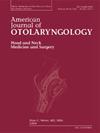晚期喉部鳞状细胞癌的个性化治疗策略和预后:来自机器学习模型的见解
IF 1.7
4区 医学
Q2 OTORHINOLARYNGOLOGY
引用次数: 0
摘要
目的:尽管发展了多种治疗方案,喉鳞状细胞癌(LSCC)的死亡率仍在增加。我们的研究采用生存分析和机器学习(ML)技术来评估不同治疗方案对生存的影响,并为晚期LSCC的个性化临床决策建立预后模型。方法监测、流行病学和最终结果(SEER)数据库为本研究的分析提供数据。为了确定LSCC患者的预后变量,我们进行了Cox回归分析,并使用五种机器学习(ML)算法构建了预后模型来预测5年生存率。采用纳入受试者工作特征(ROC)曲线下面积(AUC)的验证方法验证ML模型的准确性和可靠性。我们还使用Kaplan Meier (K-M)生存分析研究了多种治疗方案的作用。结果共纳入7350例患者,其中2689例诊断为声门癌(GC), 4349例诊断为声门上癌(SuGC), 312例诊断为声门下癌(SC)。ML模型将年龄、性别和分期确定为影响生存的最重要因素。在治疗方面,所有解剖部位的最佳生存治疗选择是手术和放疗(RT)。结论采用手术和放疗等多模式治疗是治疗晚期LSCC的关键。考虑年龄、性别和肿瘤分期等预后因素的量身定制的方法是必要的。此外,化疗对总生存率没有显著影响,这表明LSCC管理的潜在改进领域。本文章由计算机程序翻译,如有差异,请以英文原文为准。
Personalized therapeutic strategies and prognosis for advanced laryngeal squamous cell carcinoma: Insights from machine learning models
Purpose
Despite the development of diverse treatment options, there has been an increase in mortality rates for laryngeal squamous cell carcinoma (LSCC). Our research employed survival analysis and machine learning (ML) techniques to evaluate the impact of different therapeutic options on survival and to build a prognostic model for individualized clinical decisions in advanced LSCC.
Methods
The Surveillance, Epidemiology and End Results (SEER) database provided the data used for this study’s analysis. To identify the prognostic variables for patients with LSCC, we conducted Cox regression analysis and constructed prognostic models using five machine learning (ML) algorithms to predict 5-year survival. A method of validation that incorporated the area under the curve (AUC) of the receiver operating characteristic (ROC) curve was employed to validate the accuracy and reliability of the ML models. We also investigated the role of multiple therapeutic options using Kaplan Meier (K-M) survival analysis.
Results
The study included 7350 patients, of whom 2689 were diagnosed with glottic cancer (GC), 4349 with supraglottic (SuGC) and 312 with subglottic (SC). ML models identified age, sex, and stage as the most important factors that affect survival. In terms of treatment, bets survival therapeutic options for all anatomical sites was surgery and radiotherapy (RT).
Conclusion
Employing multimodal therapies such as surgery and radiotherapy is crucial for managing advanced-stage LSCC. Tailored approaches that consider prognostic factors such as age, sex, and tumor stage are necessary. Additionally, chemotherapy did not significantly impact overall survival, suggesting potential areas for improvement in LSCC management.
求助全文
通过发布文献求助,成功后即可免费获取论文全文。
去求助
来源期刊

American Journal of Otolaryngology
医学-耳鼻喉科学
CiteScore
4.40
自引率
4.00%
发文量
378
审稿时长
41 days
期刊介绍:
Be fully informed about developments in otology, neurotology, audiology, rhinology, allergy, laryngology, speech science, bronchoesophagology, facial plastic surgery, and head and neck surgery. Featured sections include original contributions, grand rounds, current reviews, case reports and socioeconomics.
 求助内容:
求助内容: 应助结果提醒方式:
应助结果提醒方式:


